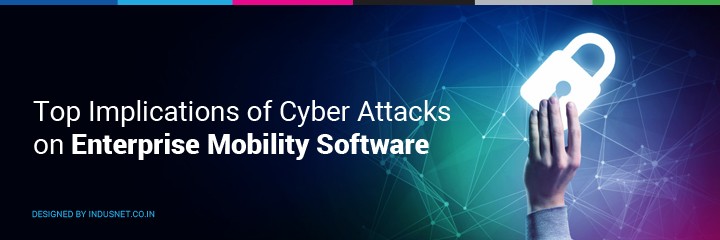
Enterprise Mobility – “Third Screen” Facilitating a World of Connected Devices
“Mobility is here to stay. It will only grow bigger and become more connected.” Enterprise mobility solutions can be defined, in simple terms, as the world of connected digital devices. Mobility means opportunities to reinvent business processes, giving access to information that is relevant and important at that point in time. It actually results in increased productivity at a decreasing cost – creating new revenue streams to engage customers in new and more agile ways. The main focus is a major transformation to unlock values at the backend data and deliver user-centric data in content to experience that transforms a system of record into a system of engagement. Business needs a solution to shift enterprise IT towards more agile mobile app development and deployment. Defining Enterprise Mobility Solution Strategy If you look at the meaning of strategy in the www.businessdictionary.com you will find that strategy can be defined in two ways: A method or plan has chosen to bring about a desired future, such as the achievement of a goal or solution to a problem. The art and science of planning and marshalling resources for their most efficient and effective use. Enterprise mobility solution is not rocket science. It is actually a well-planned structure comprising of the solutions of the existing problems. Here you will get a clear idea about what exactly is enterprise mobility strategy. We have divided the meaning into three parts for your better understanding of the concept. To structure and deliver information where it is required and when it is required Integrate technology, people and processes for efficient and effective delivery of the core business functions to the several business units present within the organization Aims at offering solutions to various existing problems of the organization related to developing as well as the delivery of mobile apps and implementing timely responsiveness to users. Source: medium.com/@maulikkotakstar/ Need for Enterprise Mobility Solutions in an Organization Let us look at the points below to get an idea of why EMS is required in an organization. Enterprise Mobility strategy ensures and evaluates: The present mobile landscape in the organization The organization’s mobile capabilities currently Potential threats related to mobility faced by the organization Evaluating the risks related to the protection of information within the organization as well as by means of corporate devices. Analyzing the impact mobility strategy will have on the functioning of the organization in future Effect of mobility on the partners, vendors, and clients of the organization and to what extent will it affect them. Enterprise mobility solutions will ensure that the organization has a well-structured and maintained mobile infrastructure. To ensure executive ownership, EMS should be inculcated in the strategic roadmap of the organization. The whole trend is shifting towards a work culture where employees will be working n business tasks sitting at home with the use of smartphones and cloud storage services. Vital Phases of Enterprise Mobility Solutions to Strike a Chord within Organization The whole idea is to simply put people, processes, and technology together powered by wireless networks which facilitates managing of the mobile devices and other computing services within the context of business. These solutions aim at those applications which help in getting the work done through smart devices like smartphones or tablet. Infinite Opportunities is directly proportional to the well-oiled enterprise mobility structure in the organization. Source: https://medium.com/@maulikkotakstar/changing-trends-of-enterprise-mobility-in-2017-53c0b89e8777 Enterprise mobility is an advanced technology that offers new-age companies a promising platform in terms of collaboration and productivity. The four important phases of Enterprise mobility are as follow: Target User: The first and foremost factor which one should take into account is the exact profile of the target user and from where there is a probability of getting business. The profile of the user should be at par with the industry objectives – keeping in mind the nature of business the enterprise wants to achieve through EMS. Objectives to be achieved: The organization has to be well-researched on places where mobility solutions can be inculcated in the daily business processes through connected devices. Before implementing mobility solution strategies the business should have a pre-set objectives which would define the goals they need to achieve. Approach: The operational tactics should be chalked out and implemented to meet the core objectives of the business, right after the alignment of the business objectives with the target group of users. Technology: Choosing the right technology is very essential for mobility initiatives. It would help in choosing the right platform and mobile devices as well. What More to Accept From Enterprise Mobility Solutions? Enterprise mobility solutions are essential for creating a bond between the various elements of the organization. Let us check how EMS connects to the vital parts of the organizational infrastructure: Implementation of EMS can help to improve the productivity of the various departments within the organization and facilitate business growth in this cut-throat competitive market. EMS provides a business-friendly work culture in the organization with innovative flexibility standards by building mobile applications through which the business reaches its target group far and wide, utilizing the technology to the fullest. With enterprise mobility, the organization is all set to handle each and every business responsibility with utmost care. The mistakes related to security can be averted by means of password protection, data loss prevention technology, and remote wipe capabilities. With EMS the constraint related to place, time and position have been eliminated to a great extent. Now businesses are connected to online media where it is accessible to millions of customers globally. This would help in the earning of profits for the business as they are actively participating in the global market. Source: https://devbatch.com/how-are-enterprise-mobility-solutions-changing-in-2018// Enterprise Mobility Solution Future Trends Enterprise mobility is advancing with the progressing time. Soon all multinational companies and business enterprises will have mobility solutions incorporated in their organizational infrastructure for a seamless workflow. The whole idea behind mobility solutions is to increase the level of comfort for employees, which in turn will increase their productivity in a conducive and favourable





